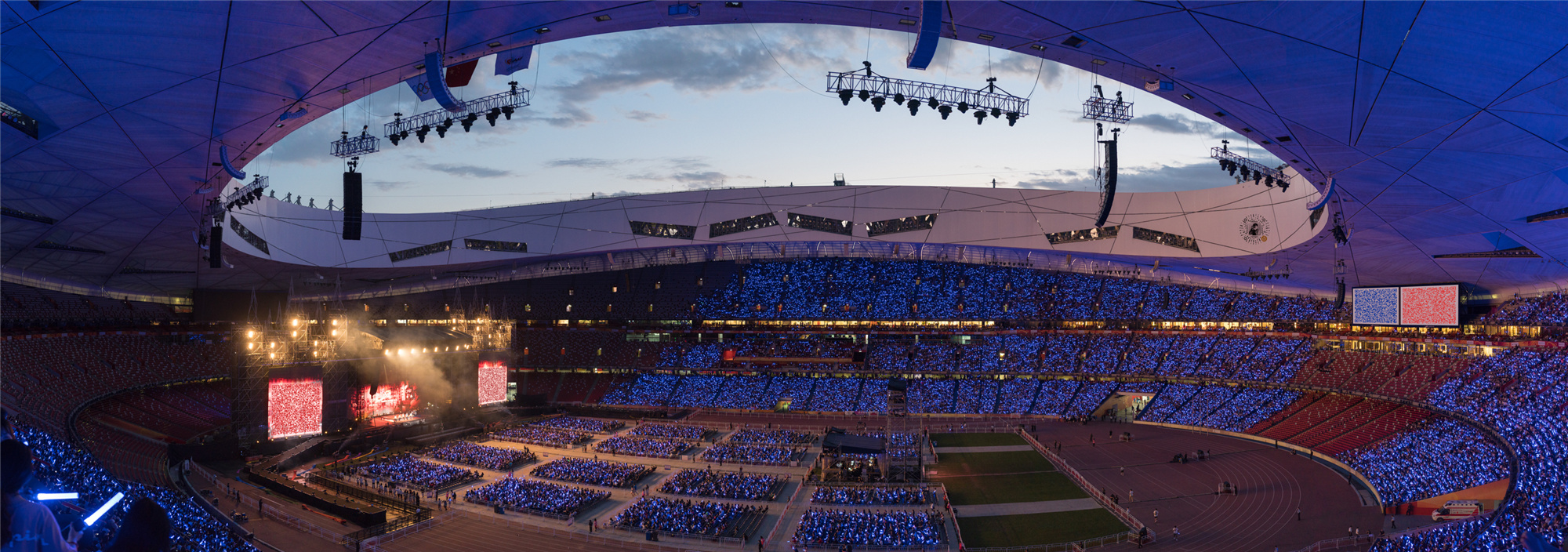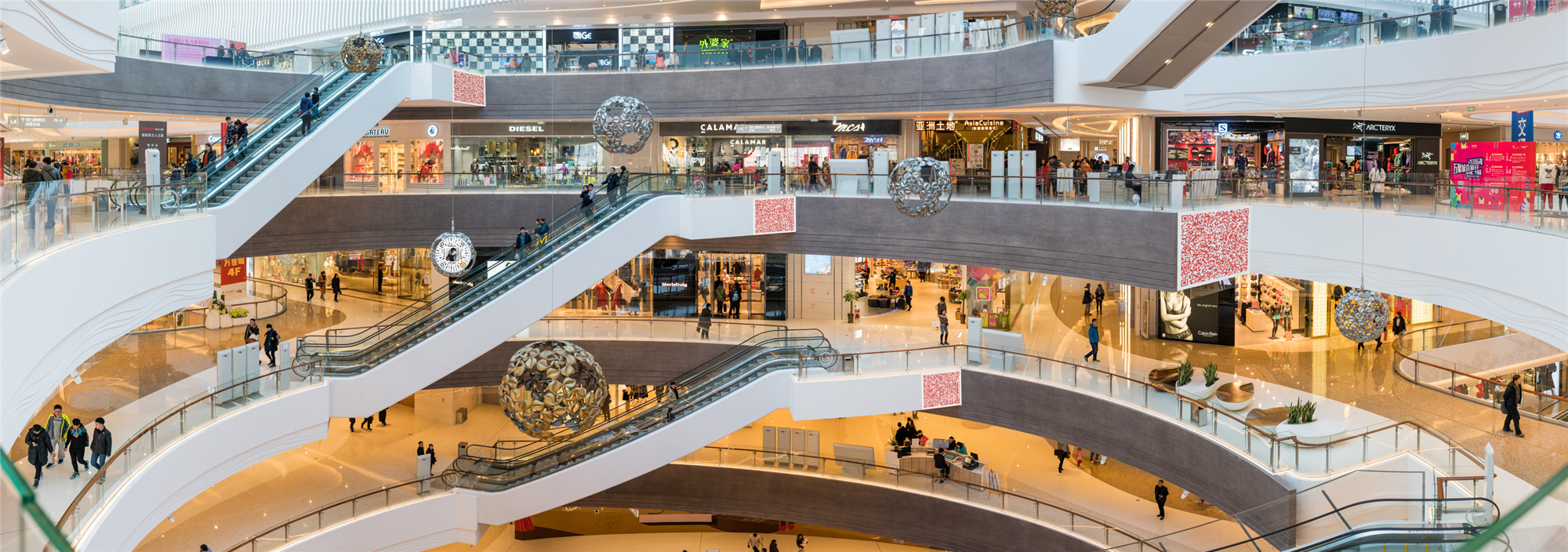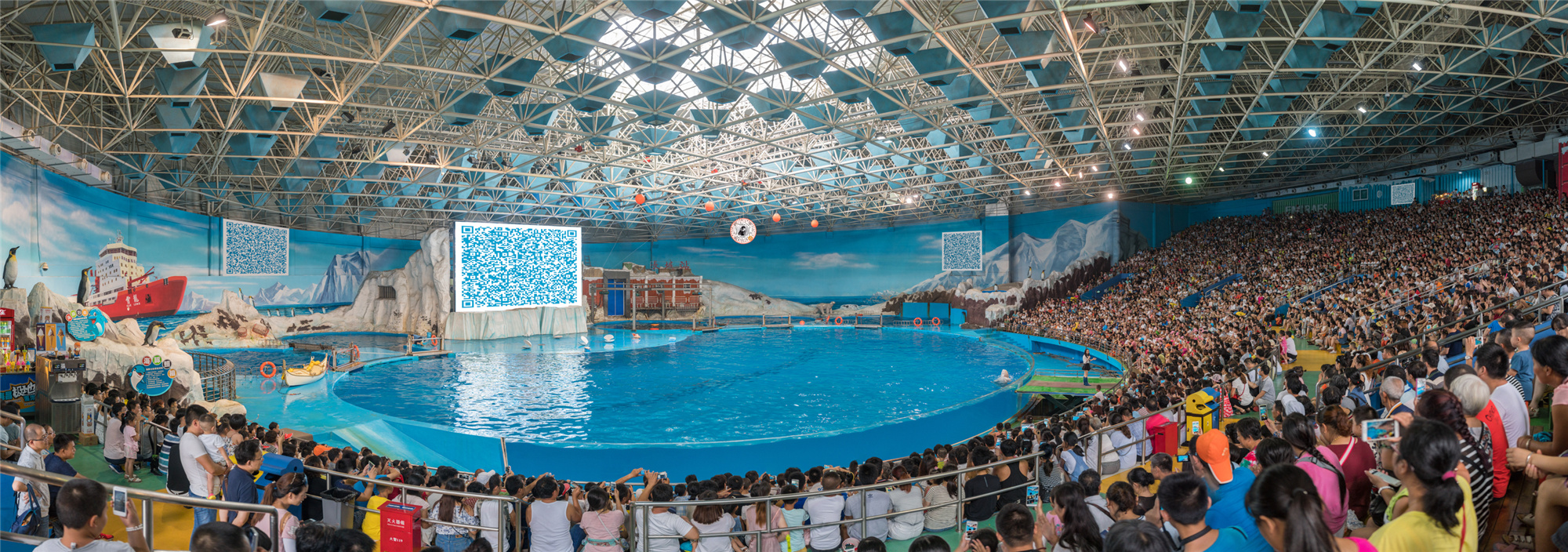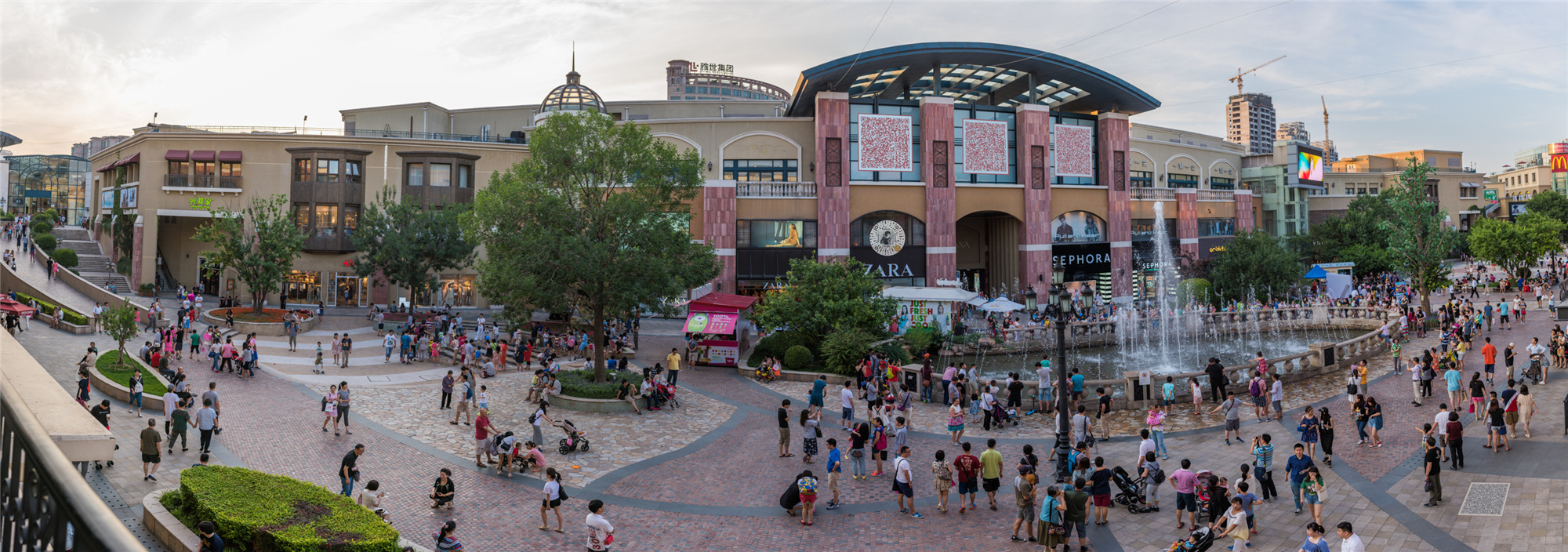QR Code《二维码》
由资本逐利而构建的各种消费场景,以迎合人性欲望为前提,通过影像、声音、视频、装置、明星代言等各种媒介,包装、兜售着自己的商品和服务,是极具诱惑力和异化力的。而为揭示这种消费奇观,使人们能对资本异化 保持基本警觉,在人文历史的长河中,居伊·德波、鲍德里亚、古尔斯基等先哲先贤们,都进行了持续不断的探索和对抗,也产出了大量的思想和影像文本供人们去研读。
而在当代社会信息媒介语境下,要延续和拓展这种对抗,使用单一媒介显然是乏力的。具有着摄影和电影知识背景的中国传媒大学本硕连读生邹京耀,以链接各种消费场景的高科技产物——「二维码」为线索,将拍摄于综合商场、休闲娱乐广场、明星演唱会、海洋馆等典型消费场景的巨幅静态影像,与这些场景中采集的细节视频、声音、延时影像等内容,以及与观众的留言互动,链接起来,形成一介多媒体互动影像作品。
当观众来到《二维码》展厅时,不仅可以感受巨幅影像带来的现场既视感,还可通过“扫一扫”,观看更多现场细节内容,并发表自己对作品或某个消费场景的看法,甚至可以给作者打赏。
二维码,不仅可以链接消费,还可以链接对消费的深度观看,以及观众态度。这是高科技带给我们的影像创作新动力。
Various sites of consumption constructed for the pursuit of capitalist profit cater to human desires. Through the various mediums of images, sounds, videos, devices, and celebrity endorsements, products and services are packaged and sold in a way that is extremely attractive yet alienating. By revealing these spectacles of consumption, we can maintain an awareness of capitalist alienation in the course of human history. Guy Debord, Jean Baudrillard, and Andreas Gursky have engaged in sustained exploration and re-sistance, and produced significant bodies of intellectual and photographic text for us to peruse.
In the context of contemporary news media, one medium or channel is not powerful enough if we want to continue and expand this resistance. Zou Jingyao, who has a background in photography and film and is currently pursuing a master s degree at the Communication University of China, has linked together the high-tech product of these sites of consumption. He takes massive still photographs of typical sites of consumption such as shopping malls, entertainment venues, concerts, and ocean-themed amusement
parks, captures details of these scenes with video, sound, and time-lapse photography, and interacts with the viewers' comments, creating an interactive multi-media work.
When viewers see QR Code, they can appreciate the sense of place evoked by these large-format images. By scanning the code, you can see more details from the scenes. You can add your own opinions on his work or a specific site of consumption, and even praise the artist.
The QR codes are not just links to consumption; they are also connections to a deeper look at consumption and the viewer's attitudes. This technology gives us new motivation for our own images.
而在当代社会信息媒介语境下,要延续和拓展这种对抗,使用单一媒介显然是乏力的。具有着摄影和电影知识背景的中国传媒大学本硕连读生邹京耀,以链接各种消费场景的高科技产物——「二维码」为线索,将拍摄于综合商场、休闲娱乐广场、明星演唱会、海洋馆等典型消费场景的巨幅静态影像,与这些场景中采集的细节视频、声音、延时影像等内容,以及与观众的留言互动,链接起来,形成一介多媒体互动影像作品。
当观众来到《二维码》展厅时,不仅可以感受巨幅影像带来的现场既视感,还可通过“扫一扫”,观看更多现场细节内容,并发表自己对作品或某个消费场景的看法,甚至可以给作者打赏。
二维码,不仅可以链接消费,还可以链接对消费的深度观看,以及观众态度。这是高科技带给我们的影像创作新动力。
Various sites of consumption constructed for the pursuit of capitalist profit cater to human desires. Through the various mediums of images, sounds, videos, devices, and celebrity endorsements, products and services are packaged and sold in a way that is extremely attractive yet alienating. By revealing these spectacles of consumption, we can maintain an awareness of capitalist alienation in the course of human history. Guy Debord, Jean Baudrillard, and Andreas Gursky have engaged in sustained exploration and re-sistance, and produced significant bodies of intellectual and photographic text for us to peruse.
In the context of contemporary news media, one medium or channel is not powerful enough if we want to continue and expand this resistance. Zou Jingyao, who has a background in photography and film and is currently pursuing a master s degree at the Communication University of China, has linked together the high-tech product of these sites of consumption. He takes massive still photographs of typical sites of consumption such as shopping malls, entertainment venues, concerts, and ocean-themed amusement
parks, captures details of these scenes with video, sound, and time-lapse photography, and interacts with the viewers' comments, creating an interactive multi-media work.
When viewers see QR Code, they can appreciate the sense of place evoked by these large-format images. By scanning the code, you can see more details from the scenes. You can add your own opinions on his work or a specific site of consumption, and even praise the artist.
The QR codes are not just links to consumption; they are also connections to a deeper look at consumption and the viewer's attitudes. This technology gives us new motivation for our own images.



